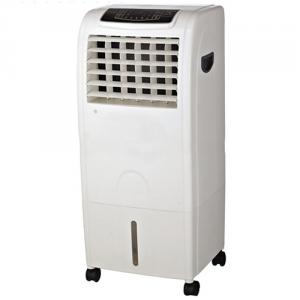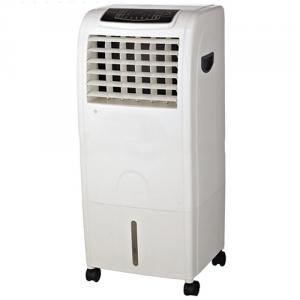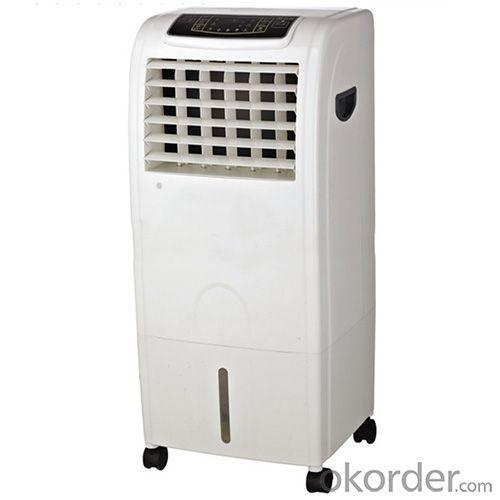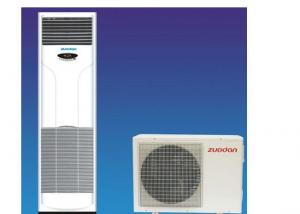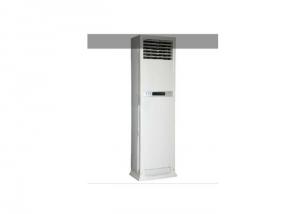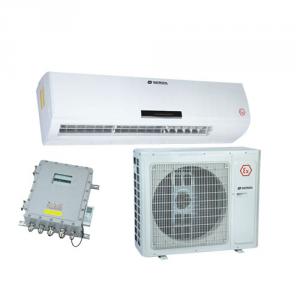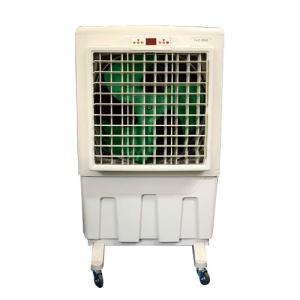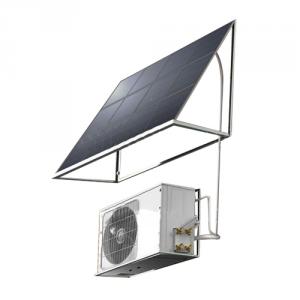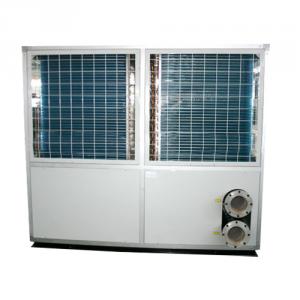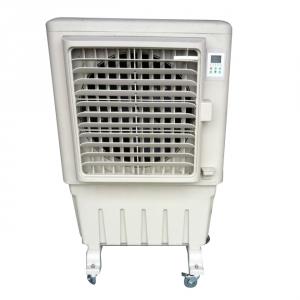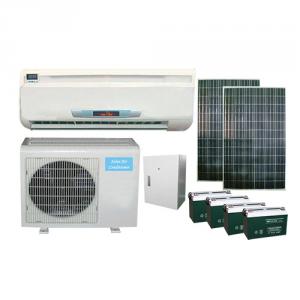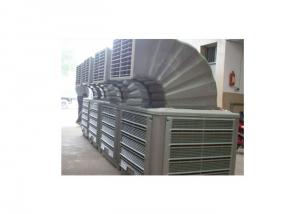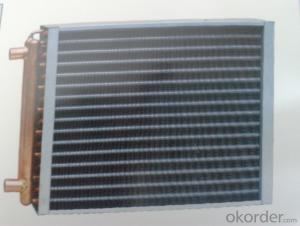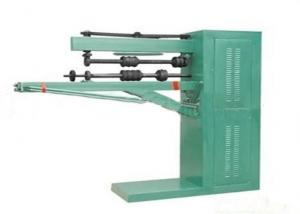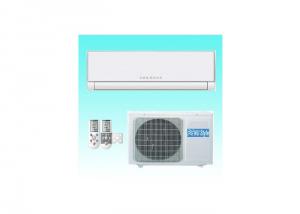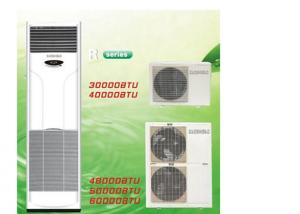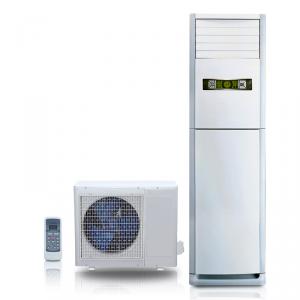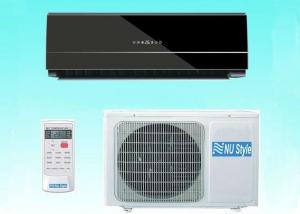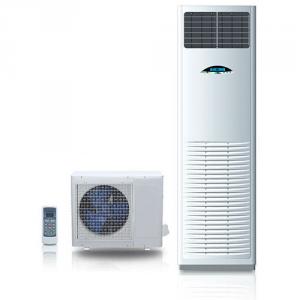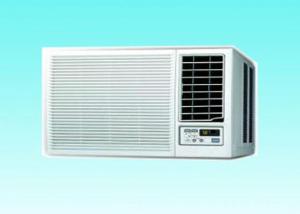20L Large Capacity Water Cooling Air Cooler With CE,CB,GS
- Loading Port:
- Shunde
- Payment Terms:
- L/C,T/T
- Min Order Qty:
- 600 Pieces pc
- Supply Capability:
- 50000 Pieces per Month pc/month
OKorder Service Pledge
OKorder Financial Service
You Might Also Like
Water Cooling Air Cooler
Specifications
1. 20L big water tank
2. portable type with castors, easy moving
3. microcomputer control, LCD display panel with soft-touch button
4. remote control type, 120 degrees receiving angle, everything is under control
5. ion group generator, breathing fresh air at any time
6. honeycomb evaporator, filtering air more effective
7. can add heating function, warm the room rapidly
8. buzzer hint device
9. fashional design/compact design, red/blue colour for choice
10. 1 year warranty
11. bring down temperature as many as 8 degree
12. 1h~24h long time timer, automatic memory operation when shut off
13. 2 blow modes: NORMAL, SLEEP
14. automatic left-right swing & up-down swing
15. easy unpick and wash design
Product Information
| Model | HLB-13A |
| Approval | CE, CB, GS |
| Fan Type | Centrifugal Cooling Fan |
| Air Flow | 980m³/h |
| Water Consumption | 1.5L/h |
| Water Tank | 20L |
| Voltage | 220V-240V |
| Frequency | 50Hz-60Hz |
| Power Input | 130W for cooler/2100W for heater |
| Application Area | 15-20m² |
| Max Speed | 10.0m/s |
| Wind Speed Choice | 3 speed level |
| Noise | 55 decibel |
| Control | 6m Remote Control |
| Swing Area | 100 Degree Wide Angle |
| Product Size | 35.4x31.8x74.0(H)cm |
| Carton Size | 39.0x35.0x80.8(H)cm |
| Loading Q'ty | 235pcs/20'GP; 485pcs/40'GP; 600pcs/40'HQ |
| MOQ | 600PCS |
| Delivery Period | 20-25 days |
Trade Information
| Payment Terms | L/C, T/T |
|---|---|
| Minimum Order | 600UNITS |
| Lead Time | 20-25 days |
| Sample Available | YES |
| Delivery Details | 30% advance payment as deposit,seller will make shipment within 30 working days after receiving deposit.Buyer should pay the balance 70% to seller after the cargo pass inspection buyer side. |
| FOB Port | Foshan |
| Loading Info | by sea, air, land |
| Packing Info | brown carton box or gift box |
| Target Market(s) | Africa, Eastern Europe, Hong Kong/Macao/Taiwan, Japan, Korea, Latin America, Middle East, North America, Northern Europe, Oceania, South Asia, Southeast Asia, Western Europe |
FAQ
Q1:Why is it important to use home air conditioner filters?
A:Without them you can clog up vital parts of the heating or cooling components that can be difficult to clean out and can cause severe damage that will be much more expensive to repair than the inconvenience of replacing a filter once a month.
Q2:What is VRF Air Conditioning System?
A:VRF air-conditioning systems owe their growing popularity to their ability to meet a wide range of requirements.
- Q: Air conditioning is out of the air come in, or only in indoor cycle?
- You ask a good general. Household wall hang machine, the air is inner loop. Model of fan coil units, also is the inner loop, fresh air to the other. With full fresh air unit, air (temperature, humidity) processing good, then sent to each room.
- Q: How many degrees electric air conditioning in a day
- Air conditioning how much electricity consumption, it doesn't matter how many temperature with you, no matter how much you open the temperature, the compressor, the normal work of the motor are all the same, the power consumption. Your is 1.5. Generally is 35 machine, is the capacity is 3500 w. Refrigerating capacity, it is said the capacity of air conditioning refrigeration (professional view should call BTU, because users don't understand what is BTU, so KongDiaoJie deliberately converted to W), not on behalf of the power, not the power consumption. Real power is not set in stone. You can see, each air conditioner has an energy efficiency label (around is blue, the middle one is white), one can effect comparing above, can effect comparing value = refrigerating capacity/actual power consumption (i.e., the input power). All your actual power consumption = refrigerating capacity/eer value, you can draw your actual power consumption is how much watts (that is, the power input number) above. Every 1000 w is a kilowatt-hour. Can you tell me, you can effect comparing so I will calculate for you, but generally 35 machine, press can effect comparing is level 5 to calculate words, generally about 1000 watts. About an hour once is electricity. So basically is to see your own how much is the air conditioning can effect comparing.
- Q: Household air conditioning cooling agent and machine outside or inside the machine, on her part
- First prepared a set of hex wrench and 14, 17 open end wrench and your freon. General air conditioning cooling agent is freon, we from the join outdoor, outdoor parts have 2 copper pipe, a stout a thin, we put the coarse and fine brass T open the cover of junction, lock hexagonal screw with hex wrench, and then put the freon containers interface to the thin tube, open the screw into the thin tube, observe the pressure, after full charged thin tube lock screw, then it is fine to collect pipes, screw down the screws, open the hexagon screws, cover nut. Suggest you won't find fix up to about 200 pieces
- Q: Air conditioning machine outside and inside of the machine, please use a power cord?
- Yes, household small splits general is mechanical and electrical source, connect from within the machine.
- Q: ?the home of air conditioning ark of wire is to use a few square?
- 1, home air conditioning ark can choose 2.5 mm square copper soft plastic wire, this is according to the needs of ark of air-conditioning installed power, coefficient, operation time, environment and fire safety factors are used to determine; 2, decorate in the family, according to the specification shall be installed by a licensed electrical work is responsible, it involves the wires, switches, sockets, lamps and lanterns, track laying away diameter, component location, maintenance and other related security measures in the future. 3, toilet bath bully optional 2.5 mm square copper soft plastic wire, because the bath bully 4 bulb power is larger. Family is the harbour of happiness, the laying of electric circuitry for once, to be on the premise of safety, with practical as fundamental, or Suggestions for the measured point
- Q: How to choose and buy online ask yi tuo 2 air conditioning, is copying other people's answer, at last, it is not family air-condition is the central air conditioning, fission air conditioning? The general set of machine? Two sets of? The central air conditioning? Is not local tyrants.
- Split type air conditioning is air conditioning set of machine is divided into inside and outside the machine, through online pipe online the types of air conditioning. Different from one-piece air conditioning, such as units. Yituo 2 air conditioners, refers to the outside air conditioning machine, towing chance within two lines. Is a kind of split type air conditioner
- Q: How do you check the fan motor on an air conditioner?
- To check the fan motor on an air conditioner, you can start by turning off the power to the unit. Then, remove the access panel to gain access to the fan motor. Check if there are any obstructions or debris that could be preventing the fan from turning freely. Next, manually spin the fan blades to see if they rotate smoothly. If it feels stiff or doesn't turn at all, it might indicate a problem with the motor. You can also use a multimeter to test the motor's electrical connections for continuity or any signs of damage. If the motor fails any of these tests, it may need to be repaired or replaced by a professional technician.
- Q: How to correctly use of household air conditioning pressure gauge
- General family expenses air conditioning don't have the pressure gauge, when maintenance will connect pressure gauge measurement
- Q: Home air conditioner type and function
- According to the structure shape classification Window units: indoor and outdoor machine, applicable to small area of the room, installation is convenient and cheap price, but the noise is big. Fission air conditioning, without being limited by the installation position, are more likely to match with interior decoration, low noise, high quality needs to be installed. Made from fission type air conditioning: large power, strong wind, suitable for room large area, but the noise is big. Condole type air conditioning: take up little tiny, air supply distance, refrigeration effect is good, but being limited by the installation position, it is not easy to clean. Embedded air-conditioning: take up little tiny, beautiful and easy, air distribution area is wide, the cooling effect is good, but the cost is high. Central air conditioning, does not take up the interior space, no bare pipe, high comfort, no dead Angle, the wind out good decorative; But the price is higher, install complex. Air conditioning according to different classification of structure shape, the main can be divided into the window, hanging clothes closet, ceiling type, embedded, and central air conditioning, so a few kinds. Due to the different structural volume, take up the space also have differences, such as when the choose and buy, had better according to the size of space of the room, and so on and so forth to choose the right structure of the air conditioning.
- Q: Choose frequency conversion air conditioning and fixed frequency which is more suitable for me?
- Yes, frequency conversion air conditioning refrigeration effect and energy efficiency than ordinary strong many! 16 to 18 square with 1.5 P. Recommend beauty galaxy M180 hanging air conditioning - KFR - 35 gw/BP2DY - M dc frequency conversion, energy saving more thoroughly; The international advanced high-speed chip, the IR performance is more stable; Three kinds of comfortable sleep mode; "Digital portable" feeling, comfortable temperature with you move; Hot dry cleaning function, lasting fresh and healthy.
Send your message to us
20L Large Capacity Water Cooling Air Cooler With CE,CB,GS
- Loading Port:
- Shunde
- Payment Terms:
- L/C,T/T
- Min Order Qty:
- 600 Pieces pc
- Supply Capability:
- 50000 Pieces per Month pc/month
OKorder Service Pledge
OKorder Financial Service
Similar products
Hot products
Hot Searches
Related keywords
